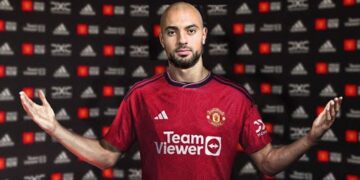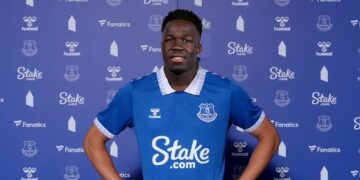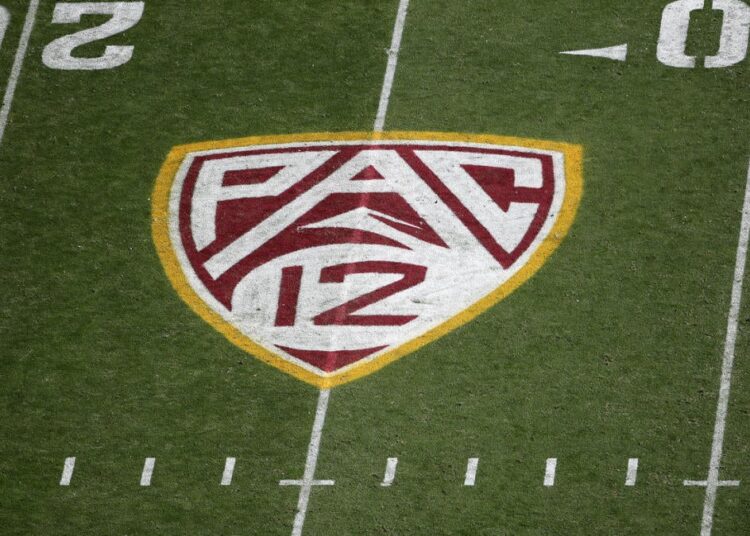The latest news in realignment is magic. That is if you believe “Chris Angel’s Magic With The Stars” is a proper lead-in to major college football. That’s the kind of foundational programming featured on The CW, a broadcast network that specializes in ratings giants such as “World’s Funniest Animals” and “The Goes Wrong Show.”
The CW has been in discussions with the Pac-12 as a linear partner in the league’s much scrutinized new media rights deal, multiple sources confirm to CBS Sports. However, sources also say those discussions were weeks ago and only regarding what was described as a “small package” of games.
A 10-team Pac-12 has about 65-70 games per year to sell. Nearly nine months news broke of USC and UCLA leaving for the Big Ten, the conference hasn’t been able to find a buyer or buyers.
“It’s just not a market to be a seller of major college sports rights at this particular moment,” said Patrick Crakes, a programming expert, media consultant and former senior vice president with Fox Sports.
That doesn’t necessarily mean a deal won’t get done, but a lingering question remains: Who is going to carry Pac-12 games beginning in 2024? And that begs an even bigger question: What kind of deal can the league get?
CBS Sports previously reported the wait could be months.
Media consultant Jim Williams told CBS Sports last week he was high on The CW as well as ION as broadcast options for the Pac-12. The Athletic reported “recent discussions” between the Pac-12 and The CW.
The CW owns stations in Chicago, New York, Dallas and Tampa Bay — key areas beyond the West Coast where the Pac-12 could have penetration. The Pac-12 would also have the advantage of being able to produce those games. The league has the infrastructure left over from the Pac-12 Networks, which is expected to cease operations when the current deal expires in 2024.
“Basically, they have fiber optics at every one of those campuses,” Williams said. “They’re wired already. The ability to produce these games is a huge advantage the conference has in negotiating any deal.
“That’s a huge benefit for whoever it is. If you’re CW or ION or any combination of the two, the fact you don’t have to send a production team to wherever is a huge plus.”
Williams suggested that infrastructure may open a door to another option for a Pac-12 deal: something all-in with Apple. That’s what Major League Soccer is doing this season at the start of a 10-year deal. Some of those games are sublicensed to Fox. That gives the MLS a presence on linear (traditional broadcast and cable) in addition to streaming.
Another industry source said the MLS deal might be the blueprint for the Pac-12. If so, that would explain why the negotiations are taking so long. It would be the first-of-its kind deal for a Power Five conference.
“There are ways to do this,” Williams said, “if you get creative.”
ION, in 37 of the top 50 markets, is on both DirecTV and Dish Network, which might have been the difference in whether the Pac-12 Networks had survived. Former commissioner Larry Scott’s failure to clear distribution on DirecTV is a big reason he is no longer with the league. ION’s parent company, Scripps Company, launched a sports division late last year.
Crakes doubts the viability of a deal with a station group or a lower profile network like The CW. In general, those stations are not going to be as quality a partner as an established linear cable station when it comes to rights fees. They’re not as diversified as other larger legacy media, which means they can’t support major rights fees allocations the significant sports media properties like the Pac-12 need to survive.
Also consider 80% of modern media rights deals comes from pay TV (linear cable), though the problem with linear cable is declining subscriber numbers. Plus, streaming as a revenue-generating entity for major sports at scale hasn’t hit yet.
That highlights the difficult situation in which the Pac-12 finds itself.
Crakes foresees a media rights landscape “under extreme stress” because the free-running tap of money that gushed before has now been slowed to a trickle. There will be competition in the market like the upcoming NBA and UFC contracts that will impact cable giant ESPN’s decisions. Also on the table is College Football Playoff expansion (ESPN), which many expect to wind up across multiple networks, and the WWE (NBCUniversal, Fox).
The CFP’s expansion to 12 teams will lead to multiple bidders in a Super Bowl-like process. Where does the Pac-12 fit, especially if it has to park significant content on a streaming partner?
“If you’re the Pac-12, and you’re looking at Oregon State-Washington State the first week of November that would do 650,000-800,000 viewers on FS1, say hello to 250,000-500,000 [viewers] on a streamer,” Crakes said. “I don’t care who that streamer is. That’s the math of it. The Pac-12 has got a problem on its hands.”
Crakes also believes the Pac-12 will eventually do a deal with ESPN or another established linear partner. He doesn’t see much value in the Big 12 expanding with Pac-12 teams at present. If that sounds confusing, it should be. It all folds in with the Pac-12 deal taking this long.
CBS Sports reported as long ago as last summer that the Big 12 had engaged with multiple Pac-12 schools about joining their league.
The issue still comes down visibility vs dollars. How much visibility on linear TV does the Pac-12 trade for the dollars it needs to keep some members from jumping to the Big 12? That number is one of the most closely guarded secrets in college sports. School officials aren’t saying or just don’t know at this point.
The Pac-12 continues to be trapped in an age of transition from runaway media rights to a direct-to-consumer model.
There remains no clear linear partner for the Pac-12 at the moment.
Read the full article here


























